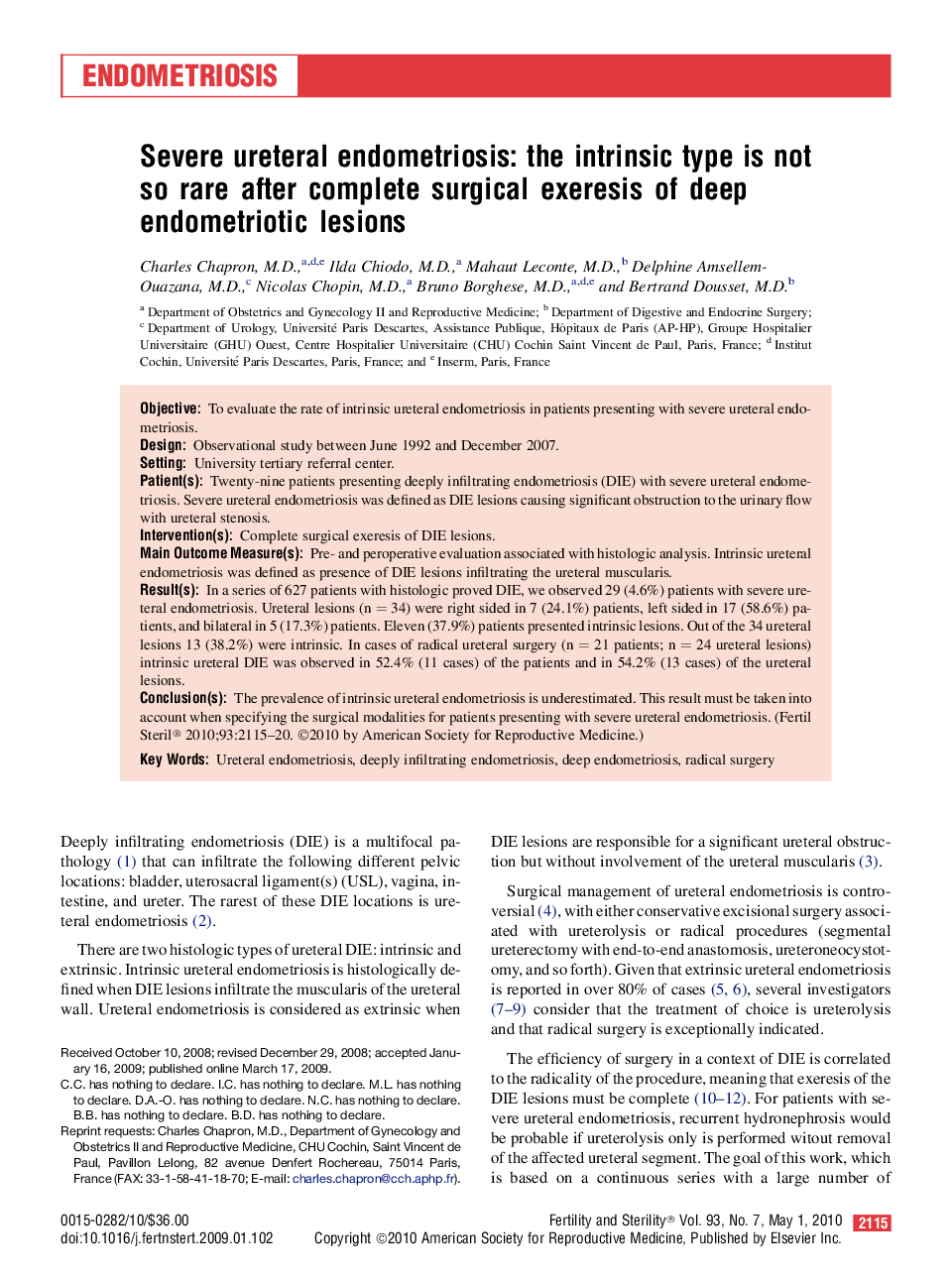| Article ID | Journal | Published Year | Pages | File Type |
|---|---|---|---|---|
| 3936319 | Fertility and Sterility | 2010 | 6 Pages |
ObjectiveTo evaluate the rate of intrinsic ureteral endometriosis in patients presenting with severe ureteral endometriosis.DesignObservational study between June 1992 and December 2007.SettingUniversity tertiary referral center.Patient(s)Twenty-nine patients presenting deeply infiltrating endometriosis (DIE) with severe ureteral endometriosis. Severe ureteral endometriosis was defined as DIE lesions causing significant obstruction to the urinary flow with ureteral stenosis.Intervention(s)Complete surgical exeresis of DIE lesions.Main Outcome Measure(s)Pre- and peroperative evaluation associated with histologic analysis. Intrinsic ureteral endometriosis was defined as presence of DIE lesions infiltrating the ureteral muscularis.Result(s)In a series of 627 patients with histologic proved DIE, we observed 29 (4.6%) patients with severe ureteral endometriosis. Ureteral lesions (n = 34) were right sided in 7 (24.1%) patients, left sided in 17 (58.6%) patients, and bilateral in 5 (17.3%) patients. Eleven (37.9%) patients presented intrinsic lesions. Out of the 34 ureteral lesions 13 (38.2%) were intrinsic. In cases of radical ureteral surgery (n = 21 patients; n = 24 ureteral lesions) intrinsic ureteral DIE was observed in 52.4% (11 cases) of the patients and in 54.2% (13 cases) of the ureteral lesions.Conclusion(s)The prevalence of intrinsic ureteral endometriosis is underestimated. This result must be taken into account when specifying the surgical modalities for patients presenting with severe ureteral endometriosis.
